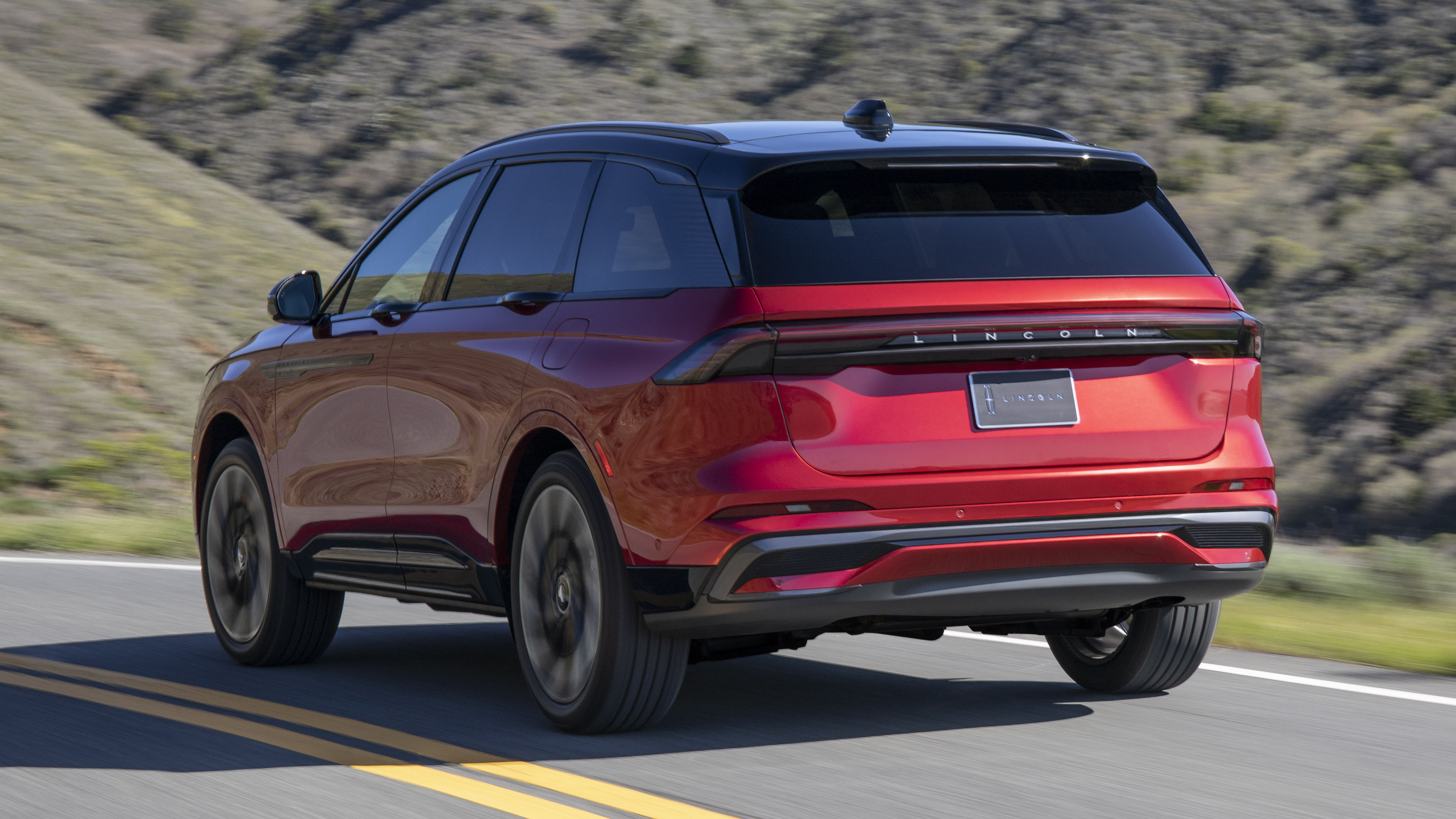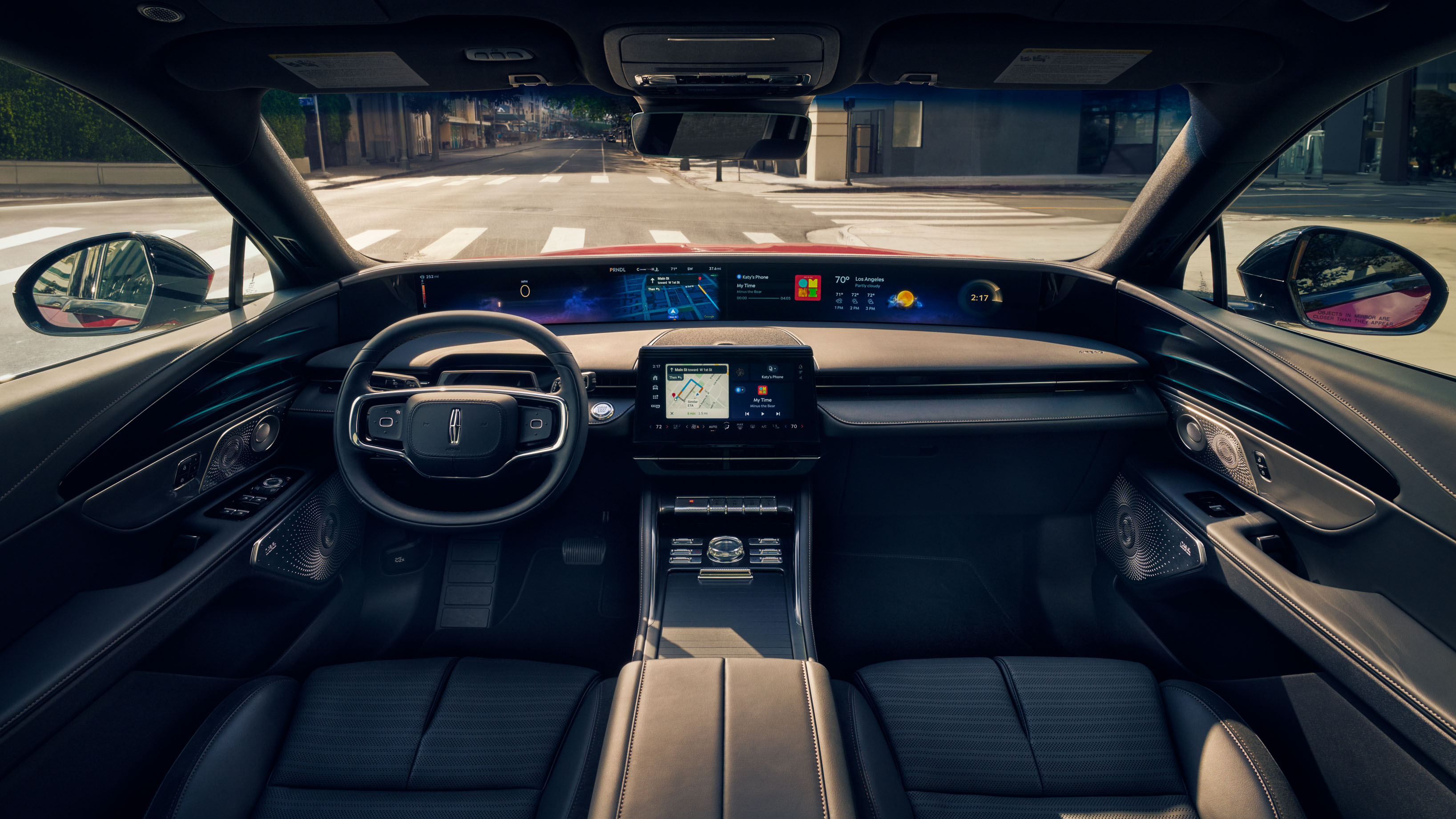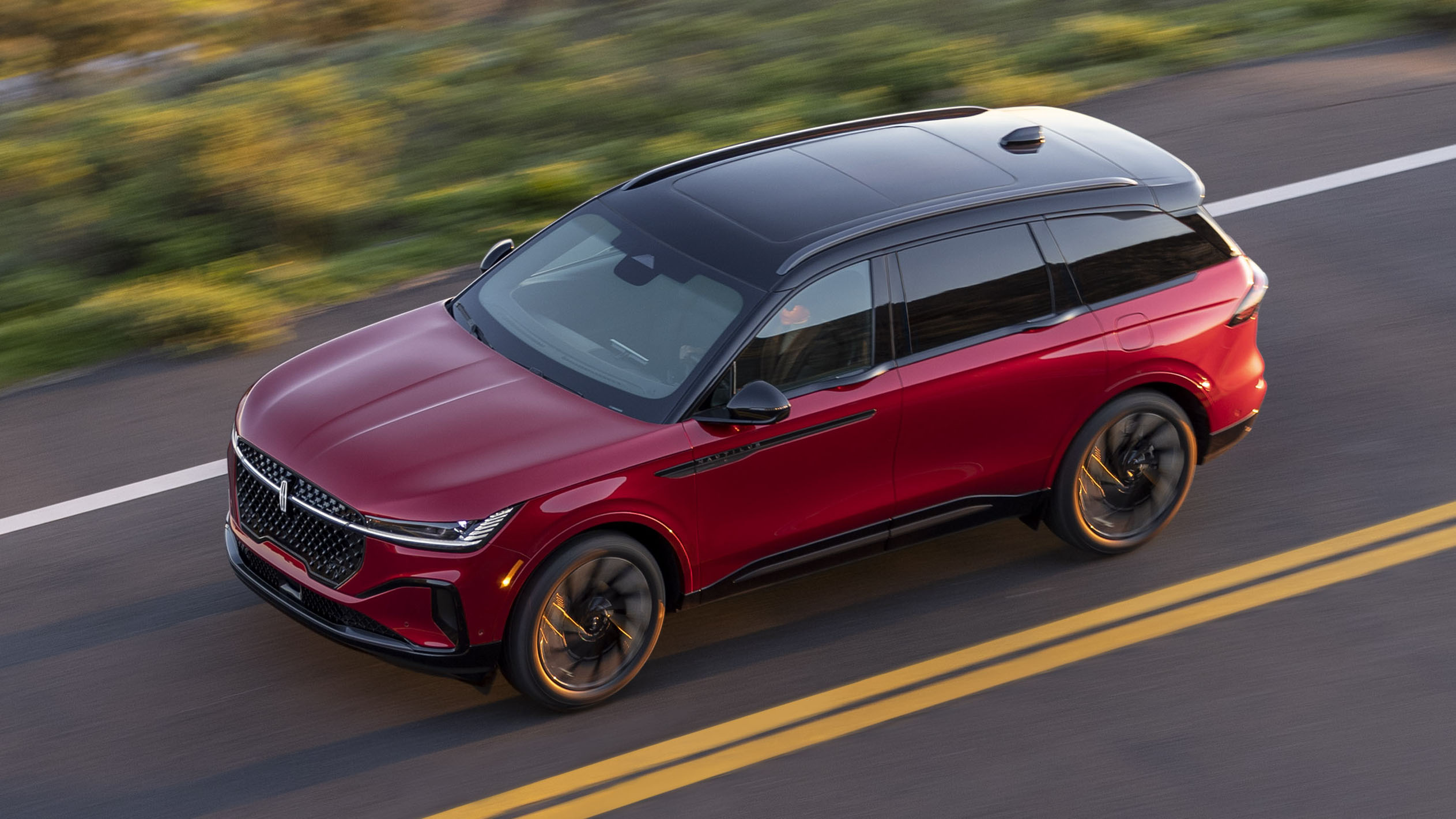
Lincoln Nautilus review
Interior
What is it like on the inside?
The Nautilus’ cabin is where Lincoln gets to put its best foot forward. The space itself is very roomy, and feels much larger at times than it is. It seats five comfortably, with plenty of headroom and 36.4cu ft of space behind the second row. The true showcase is up front with the panoramic display that’s pushed to the edge of the dash right below the windshield which also helps bend the perception of the cabin’s spaciousness.
Lots of talk about this screen. Is it any good?
We’ll say that it’s effective. If it’s mission is to keep driver eyes forward and off the traditional 11in touchscreen that’s also included, then it was successful in that. Both work in tandem and the latter remains your point of access for the majority of functions, but the panoramic screen feels more natural to use.
The layout is where it is hit-or miss. While sold as a one big screen, it’s basically two screens split down the middle. On the driver side is the fixed car data with the speedo and such blended with the navigational map. Everything that’s actually needed is here while the passenger side portion of the display is supplementary. It can be customized with three widgets to display things like the weather, the current media being played, and trip data.
From the driver perspective, it was fine that there wasn’t much call to glance over at the far end of the screen, but to that end, it felt more and more unnecessary. Like it had to be there for the purposes of symmetry but it was being filled with stuff for the sake of being filled.
We could also get a little nit-picky about the amount of negative space in the gauge cluster. Maybe make the speedometer numbers bigger or use more of the screen for maps instead of pretty graphics, Lincoln.
Tell me more about the tech.
Sure, the screen gets most of the spotlight here, but there’s a big mix of practical tech and just-for-fun stuff. On the practical side of things, Lincoln’s Co-Pilot 360 suite brings a bunch of welcome safety and conveniences like 360 parking cameras, cross-traffic braking, pre-collision assist with automatic braking and all that good stuff.
On the goofier side of things is how eager Lincoln is to showcase the graphical prowess of its interface. Harnessing the sound system and overlaying a blissful scene on the panoramic display, the Nautilus can become a relaxation zone. This is backed up by the massage seating and the “digital scent feature", AKA a blend of aromatics that can be chosen to permeate the cabin. Other luxury brands like Mercedes-Benz have their own versions of this, though in the Lincoln, it’s a brief, stationary, engine-running experience. You’d think this would be a neat indulgence to be used while charging up the hybrid but that’s not the case.
It’s also worth mentioning the application of BlueCruise, the hands-free drive assist that’s been incorporated into the Nautilus. Like the similarly-named Supercruise from GM, the Ford/Lincoln iteration is a highway-only system that allows for attentive yet hands-off driving. Ostensibly, it’s there to let the driver relax somewhat on a long stretch of interstate, but it’s hard to be at ease when the Lincoln is cruising at highway speeds with your hands at your side.
Eye tracking is employed to make sure the driver is watching everything unfold ahead. Thankfully, the system is quite effective at keeping up with traffic, changing lanes automatically, and even shoving to one side of the lane if there’s a big truck in the adjacent lane.
Featured

Trending this week
- Car Review
BMW 1 Series






